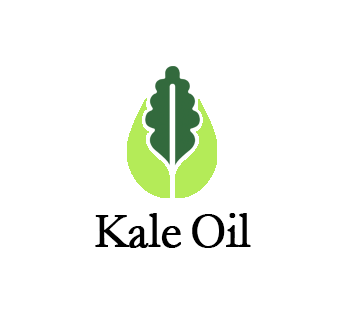Is Kale Oil good for your skin?
To understand the health benefits of Kale Oil, you have to understand the science.
In my post on the scientific lab testing results, I share some discoveries.
In this post, I want to outline what those discoveries mean.
Below is some additional information on the basic properties and uses of each discovery and what that means for human application.
Fat - 99.7%
Kale oil is mostly polyunsaturated fat, the worst kind of fat. This fat transports vitamins and nutrients around the body.
Saturated fat - 7.2%
Fats from animals are high in this fat and is a main contributor to high colesterol. With such small amounts of saturated fat in Kale Oil, this is not a real concern.
Calcium - 1.5 mg/100 g
It seems to be recommended to aim for 1,000 - 1,200 mg of calcium everyday.
Mostly this comes in from dairy products, like milk, yogurt and cheese. You can also get calcium in seafood, leafy greens like Kale leaves, beans some fruit and tofu.
Small amounts of calcium was discovered in Kale Oil, but not in amounts worth discussing in further detail.
Potassium - 0.7 mg/100 g
Potassium is a important mineral that helps your muscles contract and expand, most notably, the muscles that keep your heart beating and lungs breathing. It does many other important things, but you should get potassium from fruits and vegetables, notably bananas, oranges and cooked spinach.
On average, an adult should aim for 3,500 - 4,700 mg of potassium per day.
Kale Oil contains low levels of Potassium, insufficient for Kale Oil marketing purposes.
Sodium - 0.1 mg/100 g
It was a surprise to discover sodium in Kale Oil, but like levels of Potassium and Calcium discovered, the quantities are too small to pose any significant impact to health.
Vitamin A (B-caroteen) - 182,000 International Units (IU)/100 g, (retinol) 66.1 IU/100 g
Kale Oil contains a significant amount of Vitamin A which was an exciting discovery!
If consumed, Vitamin A is good for healthy skin, the immune system and eye health, however Vitamin A has many properties that are especially good for the skin when applied topically.
Many moisturizers, sunscreens and anti-aging creams contain vitamin A, notably to slow skin aging, reduce wrinkles and fight acne by reducing the likelihood of pores clogging up.
Vitamin B6 (pyridoxine) - <0.01 mg/100 g
Vitamin B6 is useful for mental health and healthy nerves skin and blood. Although a healthy adult should have less than 1 mg of B6, The volume found in Kale Oil was so low that it is not a major factor in the marketing of this product. B6 is found in pork, chicken, turkey, fish, wholegrains, eggs and many vegetables.
Vitamin C (ascorbic acid) - <0.44 mg/100 g
A small amount of Vitamin C was found in Kale Oil. Vitamin C is known to repair damaged skin cells, helping the body heal. This is why it is taken to prevent and stop the common cold.
When applied topically, Vitamin C helps repair damaged skin cells, which is a plus for kale oil. It has also been noted that Vitamin C does protect against skin wrinkling when applied to the skin.
When taken orally, based on the daily recommended intake of around 80 mg, you are better to eat citrus fruit if looking for the overall health benefits of this vitamin.
Vitamin E (synthetic) - 20.5 IU/100 g
It was no real surprise to find lottos Vitamin E in Kale Oil because it is common in vegetable oils.
The recommended daily amount of Vitamin E is 22.5 IU.
The moisturizing properties of Vitamin E reduces wrinkles and inflammation. When applied after being in the sun, it also helps to reduce UV damage to the skin. One common application is to let Vitamin E rich creams and moisturizers sit on your face overnight so it absorbs into the skin and nourishes it.
Vitamin K (phylloquinone K1) - 0.07 mcg/g (7 mcg/100g)
I looked into Vitamin K volumes in Kale Oil, because the Kale leaf is high in it. The Oil has enough Vitamin K in it to make it worth looking into deeper. The recommended daily doses is around 100 mcg per day.
Vitamin K is thought to help stretch marks and healing wounds and bruises when applied topically.
So those are the facts!
To summarize, only levels of Vitamin A and Vitamin E were high enough to pique my interest and investigate further. Vitamin K was also at levels that may have an impact to health.
If you would like to see the original reports, check out our article on ‘What does the science say about kale oil?’.


